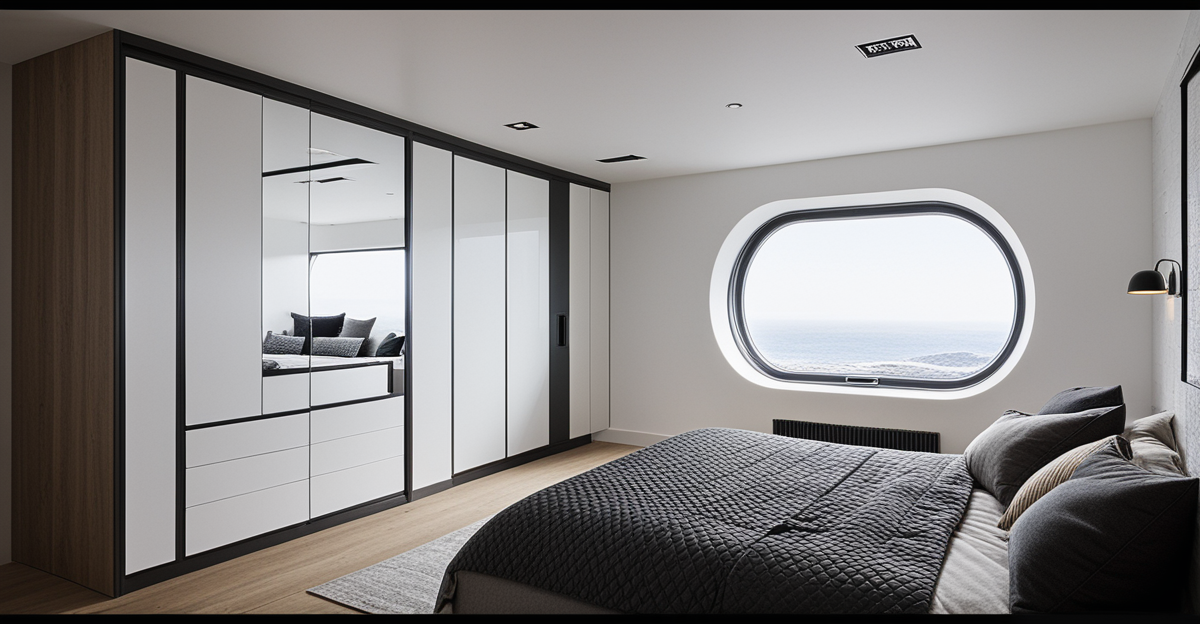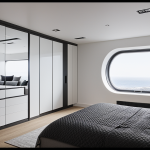Essential Principles for Maximizing Small Spaces
Maximizing space in small room design starts with key strategies that enhance the perception of roominess. One fundamental approach is to embrace decluttering. Removing unnecessary items creates breathing room, which instantly makes a space feel larger. Choosing multifunctional furniture plays a vital role here, as it reduces the number of pieces needed while maintaining functionality.
Open layouts contribute significantly to making small rooms look bigger by avoiding bulky partitions and encouraging seamless transitions between areas. This method allows for better light flow and less visual interruption, which enhances spatial perception. For example, integrating an open-plan living and dining area can boost the sense of spaciousness without compromising comfort.
Have you seen this : How Can UK Residents Adapt Homes for Eco-Friendly Living?
In addition to layout, using consistent color palettes and minimalistic design complements these principles, but the heart of effective small room design lies in smart organization and intentional furniture choices. Prioritizing these moves can transform cramped spaces into inviting, functional rooms that feel much more generous than their actual footprint.
Creative Furniture Choices for Space Efficiency
Choosing the right furniture for small spaces is crucial to maximizing both function and openness. Emphasizing multifunctional furniture—such as a sofa bed or storage ottoman—allows a single piece to serve multiple needs, effectively reducing clutter and saving space. Modular units that can be rearranged or expanded give flexibility, adapting to changing room uses without adding bulk.
Also read : How can you create a pet-friendly living space in the UK?
Another important factor is selecting compact furniture solutions proportionate to the room’s scale. Oversized pieces can overwhelm a small room and disrupt flow, so opting for slimmer profiles or floating designs helps maintain a sense of openness. For example, a narrow console table instead of a bulky sideboard frees up walking space while preserving usefulness.
Placement matters just as much as the furniture itself. Arranging pieces to encourage smooth movement and avoid blocking light sources enhances a room’s airy feeling. Placing seating away from doorways or windows prevents congestion, while grouping furniture in a way that naturally guides foot traffic fosters a seamless transition between zones. These aspects collectively support the core goals of small room design and help make small rooms look bigger through thoughtful, efficient furnishing.
Clever Storage Solutions for Small Rooms
Effective storage ideas are essential for maximizing space in small room design. Vertical storage is a powerful method—installing wall-mounted shelves or tall bookcases takes advantage of unused wall space, freeing floor areas and making a room feel less crowded. For example, using floating shelves above desks or beds creates practical storage without compromising openness.
Hidden storage enhances neatness and visual clarity. Furniture with built-in compartments, such as beds with drawers underneath or ottomans with storage inside, serves dual purposes. This reduces clutter by concealing items that would otherwise crowd surfaces, helping to make small rooms look bigger.
Organization hacks are equally important. Grouping similar items together and using labeled bins or baskets minimizes time spent searching and discourages mess accumulation. Efficient drawer dividers and closet organizers optimize every inch of available space.
Together, these storage techniques improve flow and aesthetics, reinforcing the core goal of small room design: to create functional, inviting spaces that feel larger through minimized clutter and smart use of vertical and hidden storage solutions. This approach transforms chaotic small rooms into orderly, spacious retreats.
Visual Tricks with Décor, Color, and Lighting
Subtle changes in color schemes for small rooms can dramatically make small rooms look bigger. Light and neutral palettes, such as soft whites, pale grays, or muted pastels, reflect natural light, amplifying a room’s openness. Dark or overly saturated colors tend to absorb light and visually shrink space, so opting for airy tones supports the perception of larger areas.
Mirrors are a classic yet powerful tool. Strategically placing mirrors opposite windows or light sources doubles visual depth by reflecting natural and artificial light. This reflection creates an illusion of extended space, enhancing the room’s brightness and sense of volume. A floor-length mirror or mirrored furniture surfaces serve this purpose effectively.
Layered lighting ideas also contribute significantly. Combining ambient overhead lights with task lighting, such as wall sconces or desk lamps, prevents shadows and uniformly illuminates corners. Well-lit spaces appear more inviting and spacious. Adjustable lighting, like dimmers, lets you tailor brightness to mood and time of day, maintaining comfort without sacrificing perceived size.
Together, these visual expansion techniques complement other small room design strategies, reinforcing a cohesive, open atmosphere without sacrificing style or function.
Step-by-Step Room Transformation Examples
Transforming a small room starts with clear, practical steps that strategically apply space transformation tips. A successful room makeover focuses first on layout improvements by removing excess furniture and repositioning essential pieces to open walking paths and boost flow. For instance, shifting bulky seating to corners or walls prevents disruption of natural movement, enhancing the sense of spaciousness.
Next, upgrading storage solutions is crucial. Adding wall-mounted shelves or built-in cabinets frees floor space, reducing clutter that often makes rooms feel cramped. Hidden storage, such as under-bed drawers or ottomans with compartments, conceals belongings and maintains a clean look, crucial to make small rooms look bigger.
Color and décor adjustments further enhance transformation. Lightening the color scheme to neutral or pastel shades brightens space, while introducing mirrors across from windows maximizes natural light and adds depth. Thoughtfully layering lighting sources—from overhead fixtures to task lights—ensures even illumination, creating an inviting atmosphere.
These combined changes systematically convert a before and after small room scenario into a more open, organized, and visually expansive environment, providing a clear template for tackling similar design challenges.










